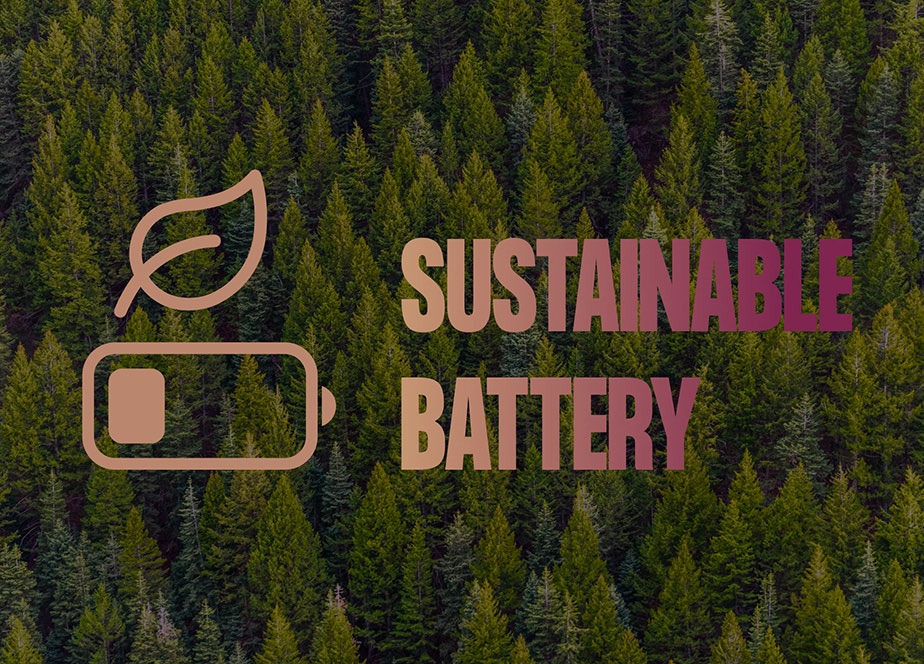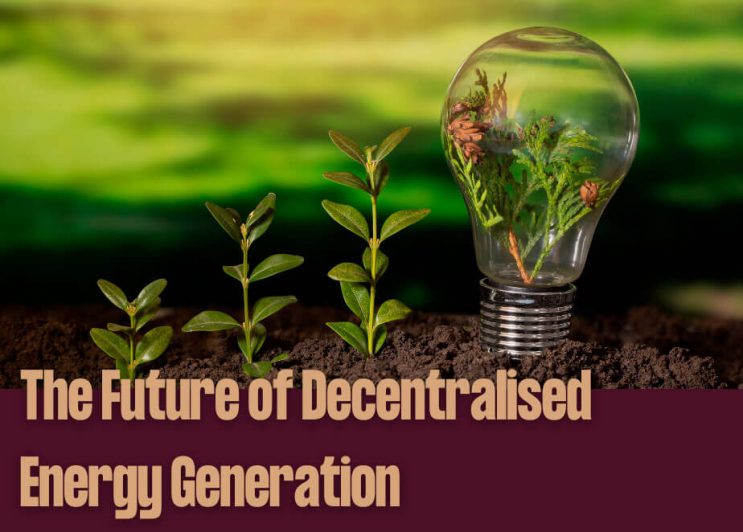Sustainable ‘Wooden’ Battery

How can a tree conduct electricity?
Most people understand the amazing ability of trees to capture carbon dioxide from the atmosphere as they grow. But far fewer people would ever have believed that material could be harvested from trees to create electrical batteries. After all, wood is a great electrical insulator, not a conductor. So how could anything in a tree be useful for electricity?
To find out the answer to that question, it’s necessary to take a closer look at a tree’s anatomy. The basic structure consists of three main components; cellulose, hemicellulose, and a sticky substance called lignin, which makes up about 25% of the tree’s structure and which acts a bit like glue to hold everything together. It’s the lignin that is of interest to scientists developing a new kind of sustainable and fully recyclable energy storage system.
One of the most voracious consumers of timber in the world is the paper milling industry. Despite great strides towards much more electronic communication, paper, and card production is still a huge global business, especially now that shopping habits have moved online, and products are being delivered in well-protected cardboard packages. Paper manufacturers are only interested in cellulose and hemicellulose for their products, so lignin is regarded as a waste product in the industry, forming part of a slurry known as black liquor that is often just burned to provide heat for the paper mill.
The useful properties of lignin.
Lignin is a substance that scientists categorise as an ‘aromatic heteropolymer’. Its structure contains small rings of benzene containing specific types of electrons, called Pi electrons, which, under the right electrochemical conditions, can be liberated without destroying the benzene ring itself. Those electrons can then, in theory, be directed through an electrical circuit to do some work before returning to the benzene ring at the end of the process. The only problem is that under normal circumstances those Pi electrons sit quite happily in the benzene rings and have no incentive to move at all, which is why lignin is naturally an electrical insulator.
In 2012, Olle Inganäs, who is a Professor of Biomolecular and Organic Electronics at Linköping University in Sweden, developed a method for bringing electrons to and from the benzene ring by creating a nanocomposite material of conducting polymers, which as the name suggests is a specific class of polymers that can conduct electricity. Down at the nanoscale, those polymer chains act like molecular wires which can then be embedded into the lignin to facilitate the movement of electrons into the benzene rings to store a charge.
Making it work.
In their relentless drive to get the cost of the battery down to something that could compete with lithium-ion, researchers at Linköping University came to realise that the original polymer material was probably going to be way too expensive, so the hunt was on for a cheaper alternative. The solution lay in plain old carbon, which is an extremely abundant material that can do the same conducting job as the expensive polymer. But it still needed to work at the same nanoscale to provide the molecular highways for those electrons to flow along. To achieve that, the team pulverised the carbon along with the lignin in a process known as ‘dry ball milling’. That process causes the carbon to combine with the lignin to form a homogenous nanocomposite material enabling the lignin electrons to move around an electrical circuit. The composite sits opposite a zinc electrode inside a battery cell filled with a liquid electrolyte made of super-concentrated potassium polyacrylate, which is an absorbent material commonly used in babies’ nappies, or diapers.
The benefits of ‘lignin’ batteries.
There are some tangible benefits in creating a battery in this way, not least of which is the avoidance of problematic components like lithium, cobalt, or nickel in the battery chemistry. The volume of paper being produced today is so vast that, according to the Linköping research team, even if all the batteries in the world were made using black liquor from paper mills, it would still only use up a small fraction of the industry’s waste lignin.

All the other materials in a lignin battery are abundant and inexpensive too, and the potassium polyacrylate in the electrolyte has the added advantage of eliminating the fire risk that occasionally besets lithium-ion batteries.
The technology is now being commercialised by a company called Ligna Energy. The target for the first generation of lignin-based batteries is to provide power for the internet of things, or IoT devices. The company realised that once 5G and 6G become the ubiquitous ‘over the air’ communication standards across the world, then the ‘internet of things’ will turn into the ‘internet of everything’. That means there will be billions and billions of tiny batteries all over the planet, each performing its own very specific function for a very short, prescribed length of time. For example, a light or heat sensor sends a brief signal to the internet to control the on/off function of a particular device. All those sensors and signallers need power, which will need to be provided by a battery.
Zero Energy Devices.
The ultimate goal for Ligna Energy is to use their lignin-based batteries in a concept known as Zero Energy Devices, first proposed by the Swedish telecommunications giant Ericsson. In practice, that means equipping these tiny machines with their own small solar cell that can recharge the unit’s battery. The advantage of doing that is that the battery can be much smaller, because it doesn’t have to carry the energy capacity to last the lifetime of the device. And it means the battery will never need to be replaced either, because it will receive a continuous supply of energy directly from light.
Ligna Energy is now working with a sister company called Epishine, which are developing roll-to-roll printing technology to produce long films of flexible plastic solar cells using conducting and semi-conducting polymers that can be processed from a solvent. It’s an incredibly cheap and efficient way to produce the huge volumes of light energy harvesting devices that’ll be needed in the coming decades as we move towards a world where every appliance and almost every surface we interact with will have some kind of sensing and measuring technology constantly pinging data back to a centralised internet-based controller designed to optimise energy efficiency.
The future of lignin batteries.
Ligna Energy does not intend to stop at tiny devices though. The plan is to develop much larger configurations for utility-scale energy storage on national electricity grids to complement, or even compete with, existing lithium-ion battery banks. There is still some development work to do before they reach that lofty goal though. The potential difference across each cell is currently about 1.3 Volts and the energy density is about 40Wh/kg. That’s roughly equivalent to existing lead acid battery technology, but of course without the toxic lead content. It’s still a long way off lithium-ion batteries though, which typically have energy densities of more than 200Wh/kg. Nevertheless, the team at Linköping is confident the energy density will be significantly improved in future iterations of the lignin battery. The operational lifetime of the cells looks quite encouraging too. Lab test batteries have achieved several thousand cycles with very little loss of capacity. So, the future could be bright for this particular energy storage solution. And the world may not have to wait too long to see a lignin-based cell in real life. Ligna and Epishine are working towards the production of the small thin film version within the next two to three years.
Strathsquare is a seed stage project initiator that provides required resources to entrepreneurs and innovators. We are driven by a sense of urgency to transition away from unsustainable technologies and processes, we believe that what we do should have a genuinely positive impact on society and our environment.
If you have an innovative idea
We are committed to supporting innovators who have the potential to make businesses more sustainable and for all.


